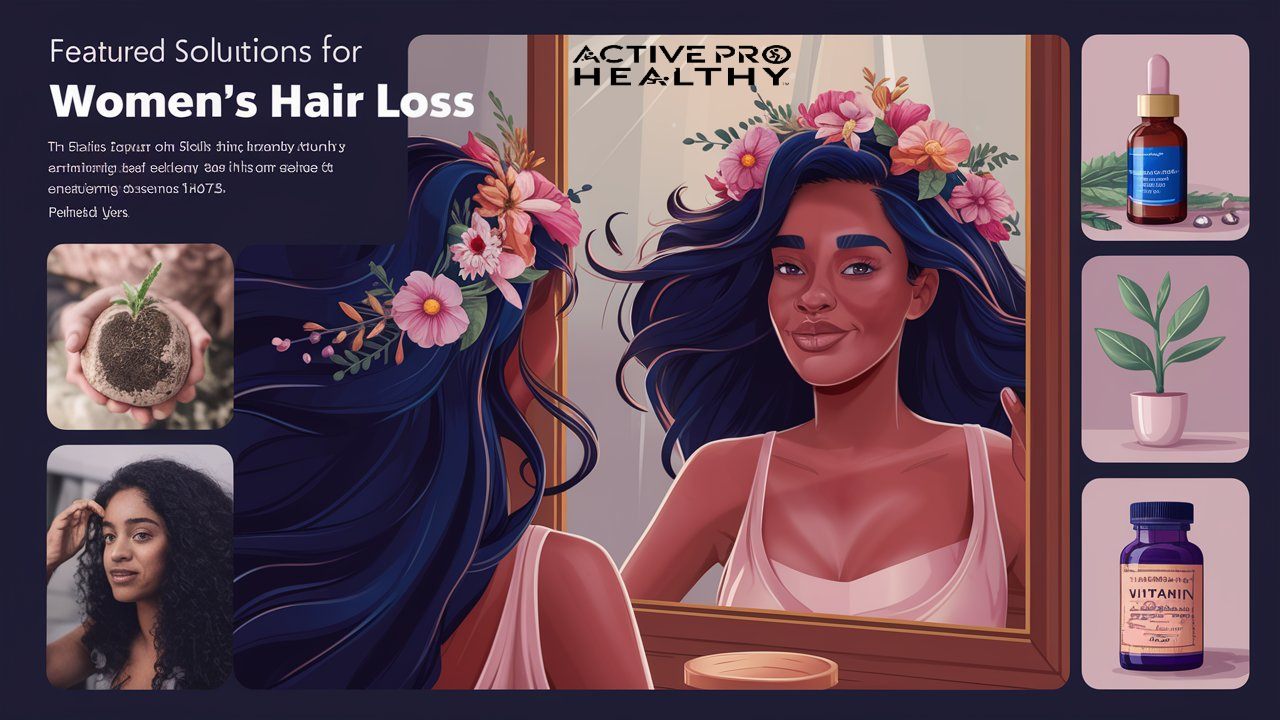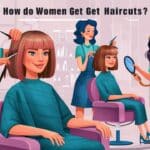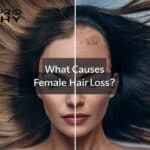When women lose their hair is says a lot about their mental state because it’s a huge blow to their ego(very depressing) hence killing if not all then most of the confidence they have. It’s sad that in fact up to the age of forty, forty percent (40%) of females have suffered or rather experienced with visible alopecia. However on another note; it’s also important to note that there are so many ways these women can use to prevent thin falling out hairs; they should get rid of such situations as quick as possible. In this article, some future solutions will be explored.
The Main Culprits Behind Female Hair Loss
While there are numerous potential causes, some of the most common include:
- Genetics: Having a family history of hair loss can predispose women to alopecias like female pattern baldness.
- Aging: As we get older, hair growth cycles naturally become shorter.
- Hormonal Imbalances: Fluctuations in hormones from pregnancy, menopause, birth control pills, and thyroid disorders often trigger shedding.
- Medical Conditions: Issues like autoimmune diseases, nutritional deficiencies, and illnesses requiring chemotherapy can lead to hair loss.
- Stress: High levels of stress generate elevated cortisol which signals hairs to prematurely enter the shedding phase of the growth cycle.
- Hairstyles: Tightly pulled hairstyles like braids and extensions can cause traction alopecia over time.
With some insight into what’s behind your thinning strands, you can better determine the right hair loss treatment path.
Over-the-Counter Remedies & Topical Solutions
One of the most popular and effective over-the-counter treatments for female hair loss is minoxidil (the active ingredient in Rogaine). Applied topically to the scalp, this FDA-approved medication extends the hair’s growth cycle, allowing for thicker, fuller hair.
There are a lot of other OTC hair growth items in stores which include shampoos, conditioners that have ketoconazole and pumpkin seed extracts hence serums and foams having botanical complexes blocking DHT (dihydrotestosterone), a hormone connected with hair loss.
While most of these commercial products have not been properly researched to confirm their effectiveness, dermatologists acknowledge that when it comes to the treatment of hair loss in women, one of the best nonprescription alternatives still remains a solution of minoxidil at either 2% or 5%.
Learn more about 10 Ways To Get Thicker Hair, According To Experts
Additional Remedies and Tips for
Here are some additional ways to deal with hair loss:
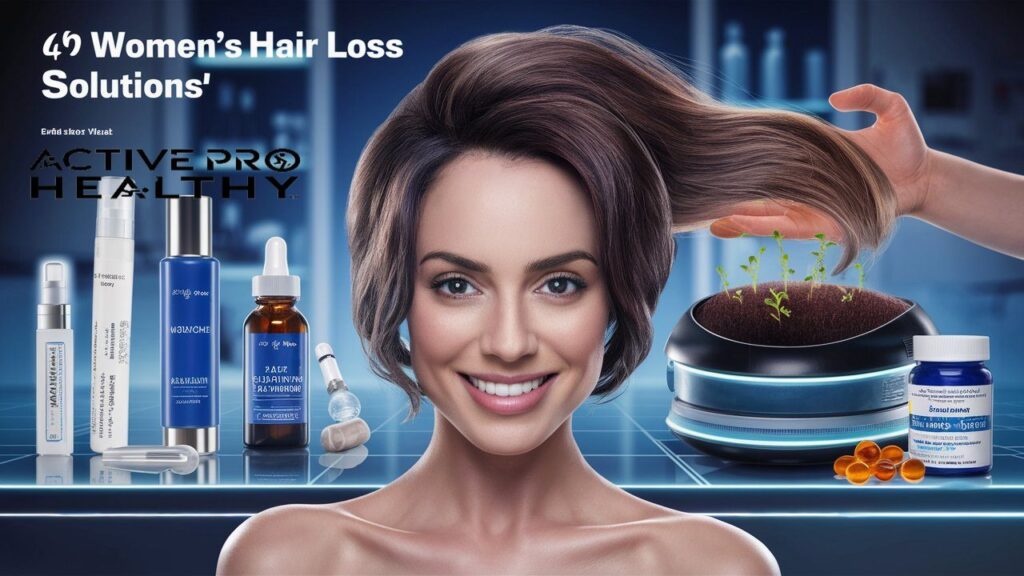
Hormone Therapy
Thinning hair and shedding are mostly the result of the imbalance in hormones in most women and hormone therapy may be of help in regulating its levels as far as controlling hair loss is concerned.
To guard against the impacts of menstrual cycle disturbances, some of the medications that can be given include birth control pills, hormone replacement therapy, anti-androgens for instance spironolactone.
How it Works: Hormone therapy essential allows the body to reach the levels within it that were there when the ladies experienced the periods that they gained much hair that was thicker. This necessitates the formation of a hormone profile that is to be referred to as “ideal” which would enable the maintenance of a longer anagen (growth) phase of the hair while curtailing its excessive loss.
What to Expect: Results typically take at least 3-6 months of consistent hormone therapy before hair fall starts slowing and new growth becomes more apparent. Patience is key as your hormone levels stabilize.
Women dealing with conditions like PCOS, thyroid disorders, menopause, or hormonal effects of fertility treatments are often excellent candidates for exploring hormone therapy options.
Hair Transplant
Preventative treatment is more preferable during the initial stages but surgical hair transplantation may be needed where the disorder is acute or untreatable. This means moving a woman’s own growing follicles from one part of the head to the thinned areas, leading to no more thinning or balding.
There are two main transplant methods:
Follicular Unit Extraction (FUE): Single follicular units with 1-4 hairs are taken from the rear and lateral parts of the head and are put into the receptor regions.
Follicular Unit Transplantation (FUT): The “strip surgery” method where an entire strip of skin containing follicles is removed and dissected into grafts.
The FUE method is more common today as it leaves no linear scar, allows for great precision, and grafts can be harvested from other body areas beyond the scalp. But it’s more tedious and may involve transplanting follicles over multiple sessions.
What to Expect: Transplants are outpatient procedures done with local anesthesia. Healing and settling-in takes 6-12 months, but transplanted follicles are permanently living and growing in their new areas. Consistent use of medical hair loss treatments is required to protect and maintain both transplanted and existing hair.
Use Hair Loss Shampoos
While shampoos alone aren’t enough to regrow hair, using the right formulas can support an overall hair regrowth plan. Many contain ingredients that create a healthier scalp environment more conducive to growth.
Some common hair loss shampoo components include:
- Ketoconazole – An antifungal that interrupts production of hair-damaging DHT hormones
- Biotin – A B-vitamin that may help with hair growth
- Saw Palmetto – Plant extract that blocks DHT naturally
- Peppermint Oil – Increases scalp circulation
- Salicylic Acid – Relieves dry, flaky scalp conditions
The key is using a shampoo with proven ingredients alongside other treatments like minoxidil or PRP. Look for products specifically marketed as “hair regrowth” shampoos.
How to Use: Work lather into scalp for 2-3 minutes, letting ingredients absorb before rinsing. Can be used daily. Some recommend leaving shampoo on for 5+ minutes like a hair mask.
While not enough alone to produce dense regrowth, incorporating a high-quality hair loss shampoo into your regimen can help maximize other hair restoration efforts.
Eat a Nutritious Diet
You’ve heard it before – but what you put in your body has an immense impact on the health of your hair. That’s because hair almost entirely consists of proteins. Without proper nutritional support, hair inevitably suffers.
Certain nutrients are absolutely essential for hair growth and strength:
- Protein from sources like meat, eggs, fish, beans, grains
- Iron from green veggies, lentils, cashews
- Zinc found in beef, pumpkin seeds, seafood
- Biotin – A B vitamin plentiful in yeast, liver, egg yolks
- Vitamin C from citrus fruits, peppers, broccoli
- Omega-3s from walnuts, flax, and fatty fish
Eating a balanced diet full of nutrient-dense foods gives follicles the raw materials they need to keep actively growing thick, strong strands.
But even the best diets can be lacking. That’s why many hair experts recommend taking a supplemental hair growth vitamin specially formulated with key ingredients to fill any gaps.
Scalp Massage
While it may seem too simple to be effective, regular scalp massage can be an excellent way to stimulate hair growth and strengthen roots naturally. Gently massaging the scalp increases blood circulation, allowing for more nourishing oxygen and nutrients to reach follicles.
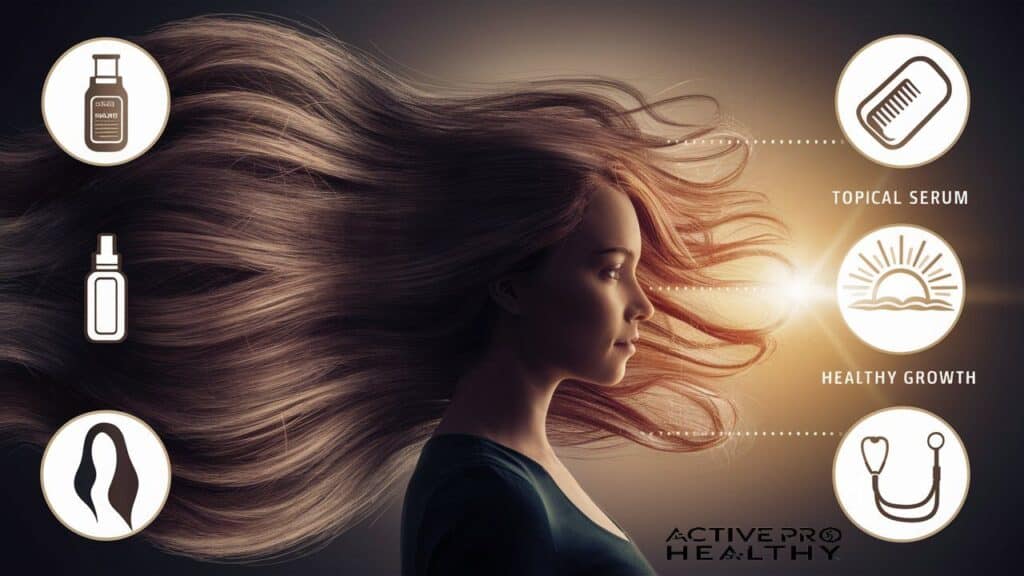
Studies show scalp massage may:
- Promote thicker hair growth
- Strengthen follicle roots
- Reduce hair shedding
- Relieve stress that contributes to hair loss
How to do it:
- Use the pads of fingers to apply gentle pressure. Work in small circular motions.
- Start at the forehead and work backward across the scalp
- Concentrate on areas that feel “knotted” or tense
- Massage for 5-10 minutes daily for best results
For added benefit, massage in a hair growth serum containing ingredients like minoxidil, peppermint oil, or redensyl before beginning. The massage helps increase absorption.
Pair scalp massage with other treatments like dermarolling, PRP therapy, or laser caps for a powerfully holistic hair regrowth approach. Who knew the low-tech scalp massage could be such an easy hair helper?
A Hair Lotion Containing Minoxidil
Minoxidil is one of the most reliable, well-researched hair loss treatments for both men and women. Initially an oral medication for high blood pressure, it was discovered to have significant hair regrowth capabilities when applied topically.
Minoxidil lotions and foams work by:
- Extending the anagen (growth) phase of the hair cycle
- Prompting follicles in “resting” stage to shed and grow new hairs
- Increasing keratin production and nutrient uptake for thicker strands
- Promoting vasodilation to improve scalp circulation
While the exact mechanisms aren’t fully understood, studies show minoxidil solutions can regrow hair in up to 25% of women with androgenic alopecia after 4-6 months of diligent use.
Minoxidil lotions are available over-the-counter in 2% and 5% concentrations for women, with the higher strength showing modestly better results but more potential for scalp irritation.
How to Apply:
- Part hair to expose scalp areas
- Apply 1mL directly to scalp morning and night
- Gently massage into areas of hair thinning
- Allow to fully dry before styling
Minoxidil is most effective when used early at first signs of excess shedding or reduced density. It requires ongoing, uninterrupted use to maintain regrowth, as new hair will shed if applications stop.
To maximize results, use minoxidil consistently while incorporating other science-backed treatments like laser therapy, PRP injections, spironolactone, or nutritional support. With commitment, minoxidil can be an excellent foundation of an effective female hair loss regimen.
Prescription Medications for Hair Regrowth
In cases of hormone-related shedding, your dermatologist may prescribe an oral medication to help rebalance things internally. Some commonly prescribed drugs for female hair loss include:
| Medication | How It Works |
|---|---|
| Spironolactone | An anti-androgen that blocks effects of testosterone |
| Oral Contraceptive Pills | Can help regulate hormones and reduce shedding |
| Finasteride | A DHT blocker that stops hormone from attacking hair follicles |
While effective, these prescription meds do come with potential side effects. Your doctor can weigh the pros and cons to determine if medication is the right route for you.
“While no drug is perfect, the benefits of prescription hair loss treatments for many women outweigh the potential downsides when combined with other hair growth efforts.” – Dr. Amy McMichael, Dermatologist
Nutritional Support for Stronger, Thicker Hair
You’ve likely heard the phrase “You are what you eat” – and that couldn’t be truer when it comes to hair health. Your hair is essentially a collection of proteins, so ensuring you get adequate protein is key. Other nutrients like:
- Iron
- Zinc
- Vitamins B, C, and D
- Biotin
- Fatty acids
…play crucial roles in preventing shedding and promoting strong new growth. Correcting any deficiencies through diet or supplementation can have a significant impact.
Hair Growth Nutrient Checklist:
- Protein (eggs, meat, beans, quinoa)
- Iron (spinach, lentils, cashews)
- Zinc (oysters, beef, pumpkin seeds)
- Vitamin B Complex (whole grains, dark leafy greens, avocados)
- Vitamin C (citrus, bell peppers, broccoli)
- Vitamin D (salmon, egg yolks, sunshine)
- Biotin (yeast, liver, cauliflower)
- Healthy Fats (fish, walnuts, olive oil)
Nourishing your body from the inside out can work wonders when combined with other hair growth treatments.
Read more Hair health guides on Active Pro Healthy
Instant Cover-Ups & Concealer Products
When the going gets tough with thinning areas, plenty of women turn to cosmetic concealer products for a temporary quick fix. From keratin hair fibers and root powders to hair masking sprays and thickening fiber creams, these topical solutions can camouflage sparse areas immediately while using other remedies.
As a woman myself, I know how helpful these cosmetic concealers can be for confidence – think, an instant “spray-on wig” for those particularly stressful days or big events where you want that extra volume and fullness.
The Innovative Power of Low-Level Laser Therapy
One of the most exciting emerging technologies in the hair loss treatment realm is low-level laser therapy (LLLT). These FDA-cleared devices use scientific principles of photobiology to stimulate follicles and increase hair’s natural growth cycle.
LLLT can be delivered via laser combs, hairline laser bands, laser caps, and even hands-free home helmet systems. The non-invasive laser light increases cellular respiration and keratin production while improving blood flow to the scalp. Many report seeing impressive results from diligent use of LLLT devices.
LLLT Success Story: Beverly K. from Chicago said, “After a year of using the laser cap consistently, my crown area is completely filled in with thick new hair growth. The awkward balding spot I had is now covered with healthy locks. LLLT combined with minoxidil has truly been a gamechanger.”
When All Else Fails: Surgical Hair Restoration
In cases of severe or persistent hair loss, surgical hair transplants may be the most effective solution for permanently restoring lost ground. Follicular unit extraction (FUE) and other modern methods involve harvesting and transplanting whole follicle units from the back and sides of the head to thinning areas.
While results can be stunningly natural, these surgical methods come at a high cost – typically $5,000-$15,000 depending on the number of grafts needed. There are also limitations on how much can effectively be transplanted. But for many with untreatable hair loss, it’s a worthy investment in permanent regrowth.
“FUE transplants are meticulous, but they allow us to restore a natural and permanent hairline for patients with limited donor hair. Managing expectations is key throughout the process.” – Dr. Parsa Mohebi, Surgical Hair Restoration Specialist
No matter what stage of hair thinning or shedding you may be experiencing, know that there is an abundance of solutions worth exploring. From topical medications and therapies to improved nutrition, concealer products, laser treatments, and surgical transplants – the path to regaining thicker, fuller hair has never looked brighter for women.
Don’t lose hope in your hair growth journey. Be proactive, have patience, and work closely with your dermatologist to develop a personalized, multi-therapy treatment plan. With commitment and the right combination of remedies for your unique needs, you can absolutely reclaim your lush locks and restored confidence.
The Bottom Line: Take control of your hair loss and start exploring what treatments could work best for you. Your beautiful, full mane is well within reach.

Tina Hudson is a renowned hair expert and author whose passion lies in helping people achieve healthy, luscious locks. With years of experience in the beauty industry, she has gained a deep understanding of the science behind hair growth and haircare. Her books and guides offer practical, research-backed solutions for various hair concerns, from thinning and hair loss to frizz and dullness. Through her engaging writing style and easy-to-follow tips, Tina empowers readers to unlock their hair’s true potential. Her dedication to promoting natural, sustainable haircare methods has earned her a loyal following among those seeking transformative results.
